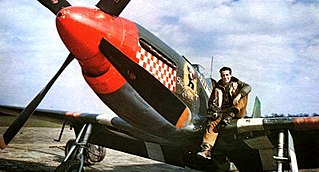
Dominic Salvatore "Don" Gentile, also known as "Ace of Aces", was a World War II USAAF pilot who surpassed Eddie Rickenbacker's World War I record of 26 downed aircraft. He later served in the post-war U.S. Air Force.

General John Charles Meyer was an American World War II flying ace, and later the commander-in-chief of the Strategic Air Command (SAC) and director of the Joint Strategic Target Planning Staff at Offutt Air Force Base, Nebraska. SAC was the United States' major nuclear deterrent force with bombers, tankers and reconnaissance aircraft, and intercontinental ballistic missiles. The Joint Strategic Target Planning Staff coordinated the nation's nuclear war plans and developed the Single Integrated Operations Plan.
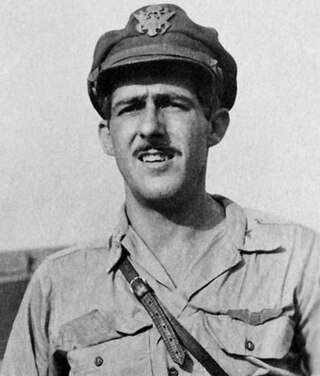
Thomas Buchanan McGuire Jr. was an American United States Army major who was killed in action while serving as a member of the United States Army Air Forces during World War II and posthumously awarded the Medal of Honor. He was one of the most decorated American fighter pilots and the second highest scoring American ace of the war.

Robert Samuel Johnson was a fighter pilot with the United States Army Air Forces (USAAF) during World War II. He is credited with scoring 27 victories during the conflict flying a Republic P-47 Thunderbolt.

Royal Air Force Boxted or more simply RAF Boxted is a former Royal Air Force station located 4 miles (6.4 km) north-northeast of Colchester, Essex England.

Colonel Walker Melville "Bud" Mahurin was a United States Air Force officer and aviator. During World War II, while serving in the United States Army Air Forces, he was a flying ace.

The 108th Operations Group is a unit of the 108th Wing of the New Jersey Air National Guard, one of the many units stationed at Joint Base McGuire-Dix-Lakehurst, New Jersey. If activated to federal service with the U.S. Air Force, the group is gained by Air Mobility Command (AMC).

The 99th Flying Training Squadron flies Raytheon T-1 Jayhawks and they have painted the tails of their aircraft red in honor of the Tuskegee Airmen of World War II fame, known as the "Red Tails," whose lineage the 99 FTS inherited.

The 56th Operations Group is a unit of the United States Air Force, and the flying component of the 56th Fighter Wing.

The 3rd Operations Group is the operational flying component of the United States Air Force 3rd Wing. It is stationed at Joint Base Elmendorf–Richardson, Alaska, and is assigned to Pacific Air Forces' Eleventh Air Force.

William Thomas Whisner Jr. was a career officer and pilot in the United States Air Force, retiring as a colonel with 30 years of military service. He was a fighter ace with Army Air Forces over Europe in World War II and a jet fighter ace with the Air Force in the Korean War.

Gerald Richard Johnson was a World War II flying ace who flew for the United States Army Air Forces. Johnson commanded the 9th Fighter Squadron and 49th Fighter Group, and became the fourth ranking fighter ace in the Pacific during World War II. He ended his war career with 22 kills.

Glenn Todd Eagleston was a career officer in the United States Air Force and the leading ace of Ninth Air Force in Europe in World War II. Eagleston was credited with 18 1/2 victories, two probable victories, and seven damaged German aircraft. He also destroyed at least five enemy aircraft on the ground, while flying P-51 Mustangs with the 354th Fighter Group.

Thomas Joseph Lynch was a United States Army Air Forces lieutenant colonel and a flying ace of World War II. After joining the United States Army Air Corps in 1940, Lynch flew the Bell P-39 Airacobra with the 39th Pursuit Squadron. After the attack on Pearl Harbor, the squadron was deployed to Australia and then to Port Moresby in early 1942.
Gilbert O. Wymond Jr. (1919-1949) was a United States Army Air Forces fighter pilot during World War II with service overseas in Africa and Italy campaigns. He was noted for his feature role in the filming of the documentary Thunderbolt (1947).

William Douglas Dunham was an American flying ace in the 348th Fighter Group during World War II, scoring 16 aerial victories. He retired from the United States Air Force in 1970 at the rank of brigadier general.
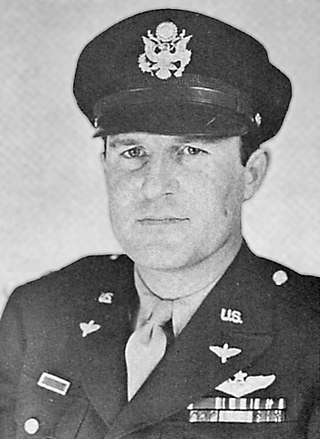
Claiborne Holmes Kinnard Jr. was a pilot from Franklin, Tennessee, who in World War II became a flying ace in the United States Army Air Force with the rank of Colonel. He is officially credited with the destruction of 8 enemy aircraft in aerial combat and another 17 on the ground while strafing heavily defended enemy airfields.
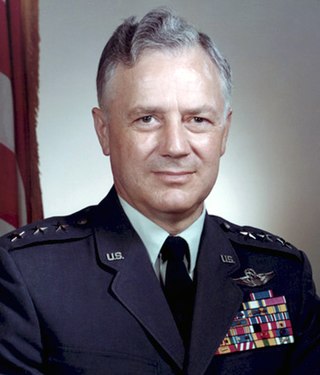
Donavon Francis Smith was a United States Army Air Forces flying ace during the World War II. He accrued 5.5 victories in the war.
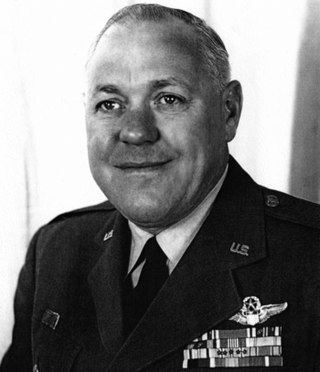
William McGowan Banks was an American flying ace in the 348th Fighter Group. He retired as a colonel from the United States Air Force in 1963, after 30 years of military service.
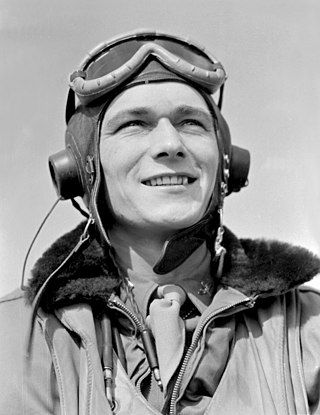
Donald Septimus Bryan was an American flying ace in World War II, who was credited with 13 aerial victories while serving with the 352d Fighter Group.






















